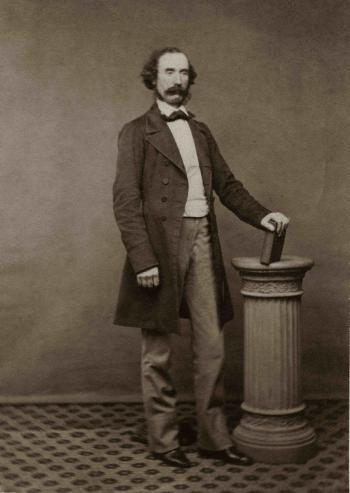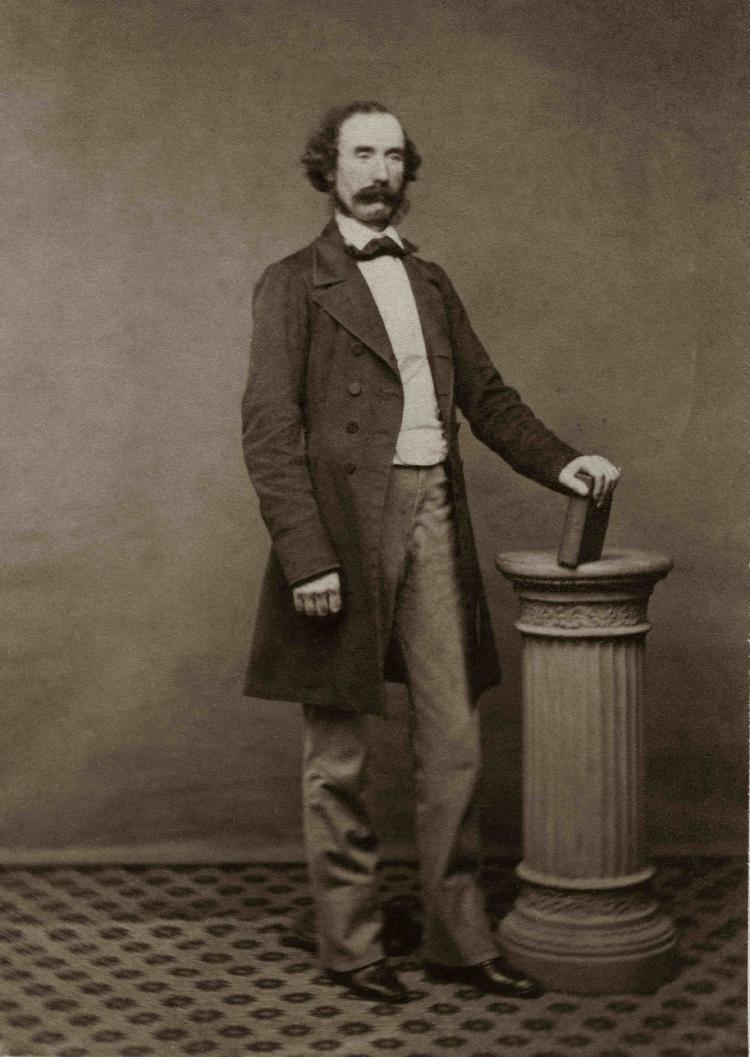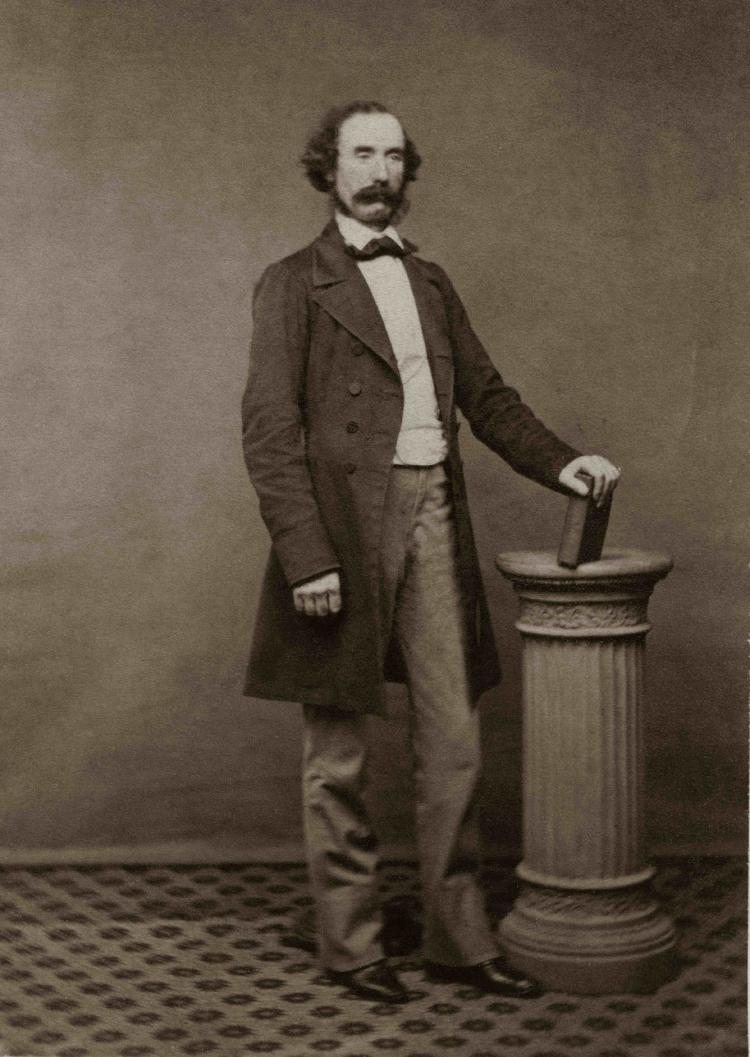An important exhibition which showcases the scientific endeavours of Dubliner Robert Mallet, is at present on show in the Royal Dublin Society (RDS) Library in Dublin.
The exhibition is an unfolding of the scientific principles of seismology. Seismology itself is a branch of geology, which measures aspects and intensity of earthquakes. Mallet is the scientist who, through his own inquisitiveness and ability, found, tried, and tested the answer regarding the causation of earthquakes.
Robert Mallet was born in Dublin 200 years ago this year. He was a scientific and mathematically-minded person who designed some testing apparatus and carried out the necessary procedures to measure quakes. He also coined some of the related terms which are still in use today.
Soon after inventing the equipment, a massive earthquake occurred which shook Naples in the year 1857, killing more than 10,000 people. Communications were slower in those days. When the news reached Dublin, Mallet realised that the damage could reveal clues about the quakes nature and cause. With support from a British geologist Charles Lyall, he raised funding from London’s Royal Society.
As quickly as possible, he arrived in Italy and spent one month there, during which time he analysed the destruction, such as where the patterns of masonry fell. He also employed the relatively new technique of photography to record the scenes.
From this evidence he was able to calculate the location and depth of the focal point, which was several miles below the earth’s surface. He then presented his findings entitled [i]‘The First Principles of Observational Seismology’[i]. This work received many awards and honours.
Mallet’s interests on earthquakes may have been kindled by earlier work to open up a railway line tunnel at Killiney. In 1846 he had presented ideas on seismology to the Royal Irish Academy.
In 1847 with his son John, who was later to become a professor of chemistry at Louisiana, Mallet detonated kegs of gunpowder at Killiney and Dalkey. They designed a process of measuring how fast the energy travelled through the Killiney sands, (251.5 metres/second) and the Dalkey rock (355.1 metres/second ). Prospectors still use this principle to reveal the underlying geology in a region. Mallet’s groundbreaking experiments were recreated last year for the BBC TV series COAST.
Robert and his son also compiled the first catalogue of earthquakes, starting with biblical accounts. They produced the first atlas of the earth’s seismically active regions. That is how sections of the earth’s crust move and collide. He is also remembered for designing one of the worlds biggest mortar guns during the time of the Crimean war.
In 1861, Robert Mallet moved to London, where he died in 1881. A plaque at Ryders Row, off Dublin’s Capel Street, marks his birthplace.
His many achievements posed a challenge for the team curating the new bi-centenary exhibition.
Karen Sheeran, RDS Science Assistant, said “they have had trouble deciding what to leave out.”
You can be assured that this exhibition is an exposition of the greatness of this Dublin-born man who provided the world with information which was unknown until then. Information which opened many avenues into the study of not only Seismology, but also many aspects of scientific advancement, has been left to us for our future.
The exhibition of this man’s prowess has something for all ages and all classes to wonder at. It certainly represents a progression - from not knowing, to knowing.
With thanks to ‘Old Dublin Society’, for granting [i]‘The Epoch Times’[i], permission to use Dublin Historical Record, Vol 29. No 2. The exhibition, The Irish engineer and scientist Robert Mallet (1810–1881), continues until September 24th.
The exhibition is an unfolding of the scientific principles of seismology. Seismology itself is a branch of geology, which measures aspects and intensity of earthquakes. Mallet is the scientist who, through his own inquisitiveness and ability, found, tried, and tested the answer regarding the causation of earthquakes.
Robert Mallet was born in Dublin 200 years ago this year. He was a scientific and mathematically-minded person who designed some testing apparatus and carried out the necessary procedures to measure quakes. He also coined some of the related terms which are still in use today.
Soon after inventing the equipment, a massive earthquake occurred which shook Naples in the year 1857, killing more than 10,000 people. Communications were slower in those days. When the news reached Dublin, Mallet realised that the damage could reveal clues about the quakes nature and cause. With support from a British geologist Charles Lyall, he raised funding from London’s Royal Society.
As quickly as possible, he arrived in Italy and spent one month there, during which time he analysed the destruction, such as where the patterns of masonry fell. He also employed the relatively new technique of photography to record the scenes.
From this evidence he was able to calculate the location and depth of the focal point, which was several miles below the earth’s surface. He then presented his findings entitled [i]‘The First Principles of Observational Seismology’[i]. This work received many awards and honours.
Mallet’s interests on earthquakes may have been kindled by earlier work to open up a railway line tunnel at Killiney. In 1846 he had presented ideas on seismology to the Royal Irish Academy.
In 1847 with his son John, who was later to become a professor of chemistry at Louisiana, Mallet detonated kegs of gunpowder at Killiney and Dalkey. They designed a process of measuring how fast the energy travelled through the Killiney sands, (251.5 metres/second) and the Dalkey rock (355.1 metres/second ). Prospectors still use this principle to reveal the underlying geology in a region. Mallet’s groundbreaking experiments were recreated last year for the BBC TV series COAST.
Robert and his son also compiled the first catalogue of earthquakes, starting with biblical accounts. They produced the first atlas of the earth’s seismically active regions. That is how sections of the earth’s crust move and collide. He is also remembered for designing one of the worlds biggest mortar guns during the time of the Crimean war.
In 1861, Robert Mallet moved to London, where he died in 1881. A plaque at Ryders Row, off Dublin’s Capel Street, marks his birthplace.
His many achievements posed a challenge for the team curating the new bi-centenary exhibition.
Karen Sheeran, RDS Science Assistant, said “they have had trouble deciding what to leave out.”
You can be assured that this exhibition is an exposition of the greatness of this Dublin-born man who provided the world with information which was unknown until then. Information which opened many avenues into the study of not only Seismology, but also many aspects of scientific advancement, has been left to us for our future.
The exhibition of this man’s prowess has something for all ages and all classes to wonder at. It certainly represents a progression - from not knowing, to knowing.
With thanks to ‘Old Dublin Society’, for granting [i]‘The Epoch Times’[i], permission to use Dublin Historical Record, Vol 29. No 2. The exhibition, The Irish engineer and scientist Robert Mallet (1810–1881), continues until September 24th.





